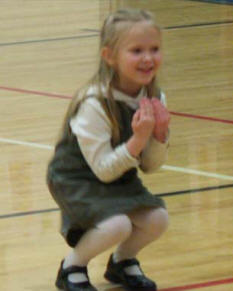"Dancing is important to me because it’s a part of my culture. I feel like I know my culture better, which makes me feel good. It’s a part of me now." ...Anonymous Quote
Program Notes Written by Middle School American Folk Dancing and Folk Music Students
Clogging originated from the Appalachian Mountains. It was brought to America by the Irish, Scottish, English and Dutch Germans who settled there in mid 1700’s. In clogging your heel keeps the down beat and you switch your heels back and forth. By Lauren, Ashlie and Ashley
The twist originated in 1958 in Georgia by a band leader who wanted his band members to move while they played. It became really popular when Chubby Checker recorded his hit song, “The Twist.” By Christopher
The Texas two-step is danced with two slow steps and two quick steps. The two step (as we know it today) derived from the American style foxtrot. Once a rather simple “barn dance” consisting of a basic walking step, the modern two step danced in Country-Western dance competitions has borrowed figures from foxtrot and swing.
The polka was originally a Czechoslovakian peasant dance developed in Eastern Bavaria. The polka is a quick dance in 2/4 time. By Lauren, Ashlie, and Ashley
The Cajun two-step is traditional partner dance performed to fast, spirited music with a 4/4 beat. There are no turns, spins, or fancy moves in the traditional Cajun two-step. This dance originated in Western Louisiana.
The waltz was invented in the suburbs of Vienna, Austria and in the alpine region of Austria. As early as the 17th century, waltzes were played in ballrooms of the Hapsburg court. The waltz was danced by peasants in Austria and Bavaria. To dance the waltz, you make a square pattern with your feet. It is usually danced with a partner. By Jami, Jaylee, and Lindsay
|

